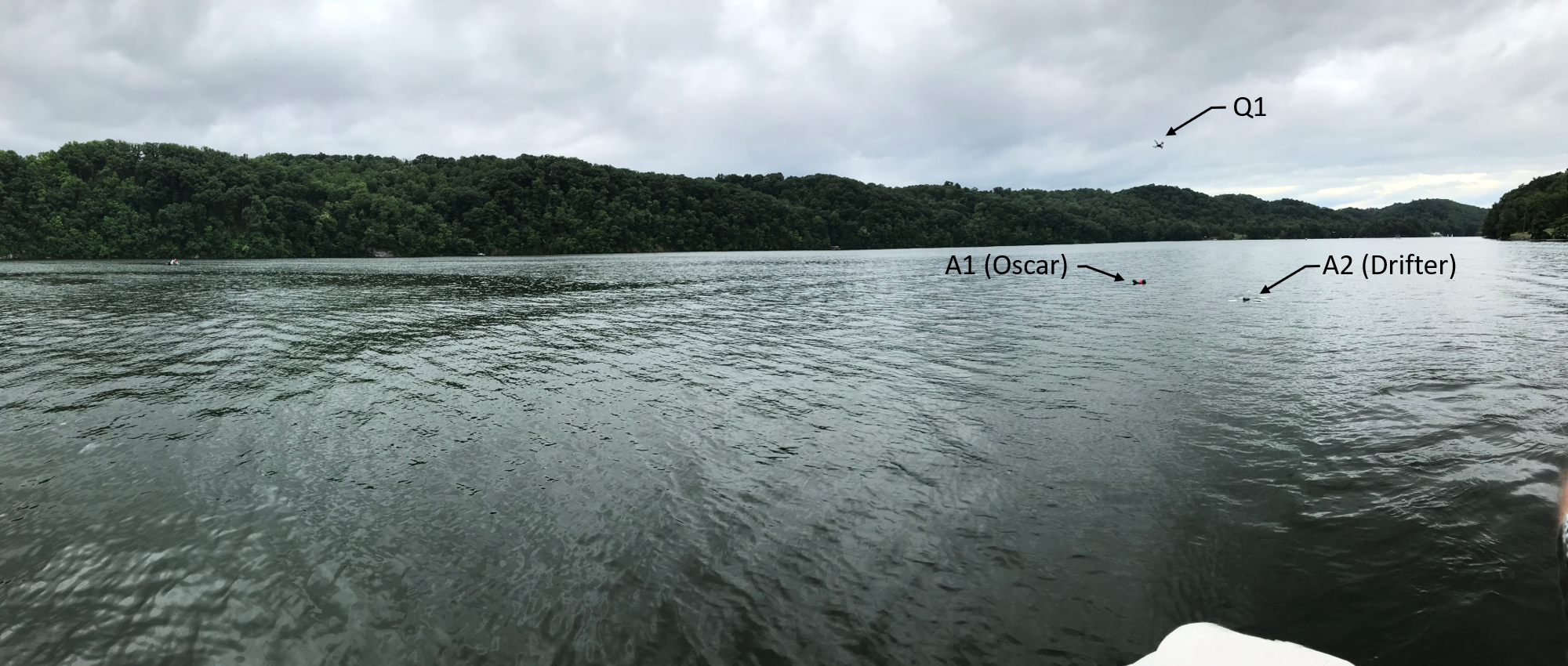
Unmanned Aerial Vehicles
Characterizing wind and water flow using quadcopters and floating assets
Understanding the wind-induced drift of objects in aquatic environments is crucial for search and rescue of both persons in distress and containers carrying hazardous material. However, existing information on wind-induced drift is limited for a broad class of objects due to cost constraints. The project focused on developing a low-cost method to characterize the wind-induced drift of floating assets.
Autonomy
Characterizing wind-induced drift required simultaneous operation of multiple VTOL aircraft and floating assets. As the lead undergraduate researcher, I developed autonomous ground control tools using PixHawk autopilot and open-source software Mission Planner. Additionally, I configured telemetry hardware to increase reliability during sea operations.
Field Tests
Telemetry hardware and GPS accuracy were tested to reduce the risk of damage to assets during sea operations. I developed and conducted several of these tests at nearby bodies of water.
Analysis
Autonomously-gathered flight data was post-processed to characterize wind-induced drift. These were further used to test current environmental flow hazard models. Research results were published on the American Geophysical Union.


